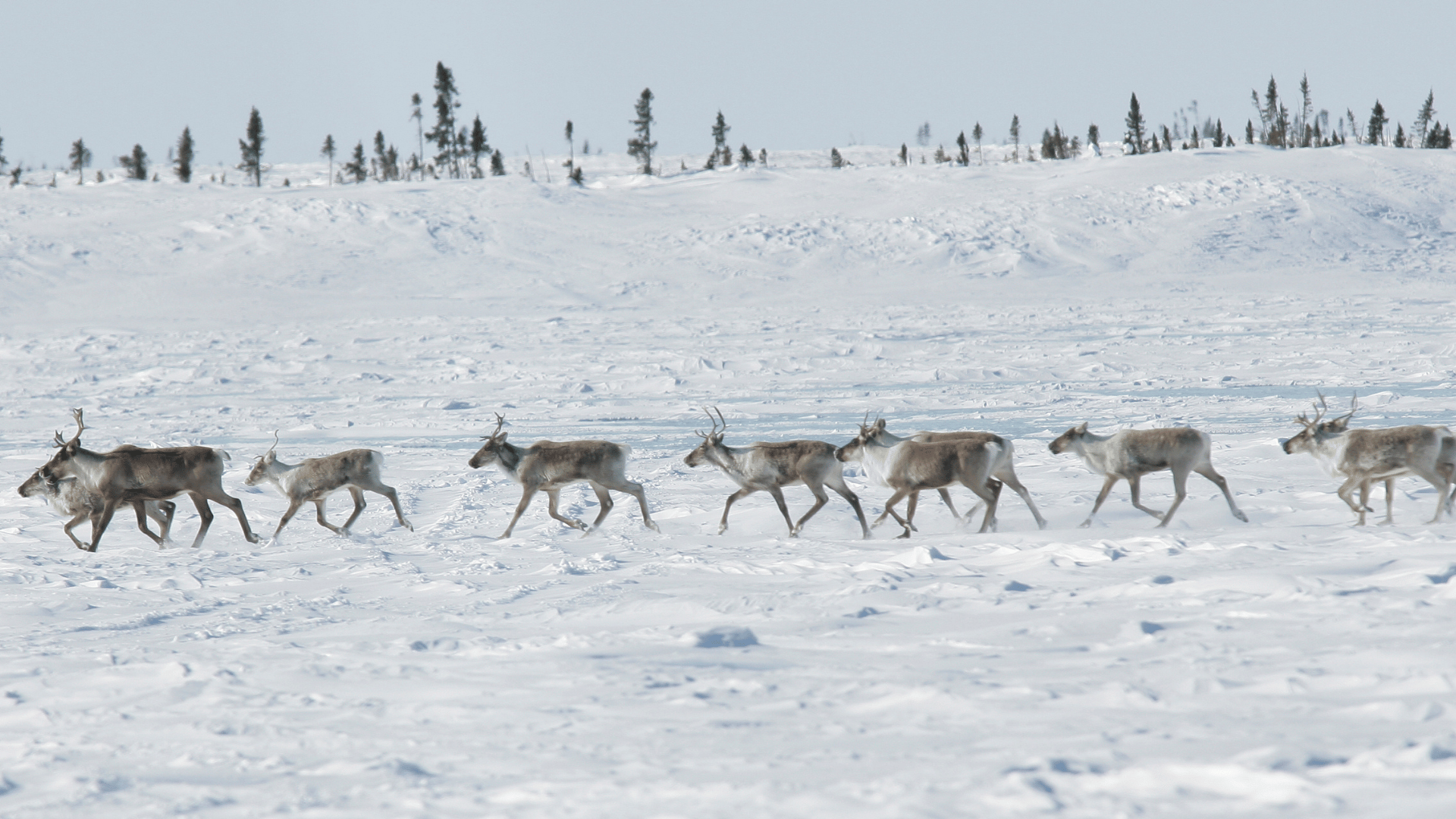A team of researchers led by British Antarctic Survey (BAS) scientists says that artificial intelligence could help protect migration routes of endangered caribou in the Canadian Arctic. In a recent study, the researchers demonstrated how AI sea ice forecasting systems could assist local agencies in protecting critical migration routes through sea and land.
According to the researchers, AI technology could help prevent ice-breaking vessels from disrupting caribou routes at key migration moments. They say it ensures the caribou’s safety when traveling south across sea ice from their summer calving grounds.
AI Protection for Endangered Wildlife

The study was published in Ecological Solutions and Evidence. It combines satellite observations, GPS tracking, AI forecasting, and local expertise to create AI models with informed migration early-warning systems for dolphins and caribou.
Dr. Ellen Bowler is a machine learning research scientist at BAS and the study’s lead author. She explained, “This new technique combines our AI sea-ice forecasts with historic tracking data from the caribou, so we can predict when they are likely to start migrating based on when the sea ice forms.”
“This means that local teams can take short-term action to support the migration by protecting sea ice migration routes from ice-breaking vessels,” Bowler added. “It’s exciting that AI could give such a positive real-world outcome.”
Dolphins and Union caribou migrate twice a year across the sea ice. Sea ice forms seasonally between mainland Canada and Victoria Island. Caribou gather along the Victoria Island banks every fall and wait for the sea ice to reform before migrating back south. Once the ice reforms, which varies, they begin to cross.
However, caribou deaths during this crossing are increasing because of lower sea ice quality and ice-breaking vessels, which create open-water leads. As a result, crucial migration routes potentially get blocked.
A Critical Tool
Researchers developed a model combining caribou tracking data and satellite observations of sea ice. Their goal is to establish connections between sea ice formations and the timing of the autumn migration. Then, the AI forecasts when the two factors will be met, giving early warnings of peak migration times annually.
Furthermore, the information provided by the AI model could be a crucial tool for local agencies, potentially helping them make informed and dynamic decisions.
“The Arctic is warming at four times the rate of the rest of the planet, resulting in rapid changes,” said Dr Scott Hosking, co-author and Mission Director for Environmental Forecasting at The Alan Turing Institute. “In the hands of local conservation experts, and combined with their existing knowledge and practices, this tool could help mitigate the threats posed to wildlife and communities in the Arctic.”


